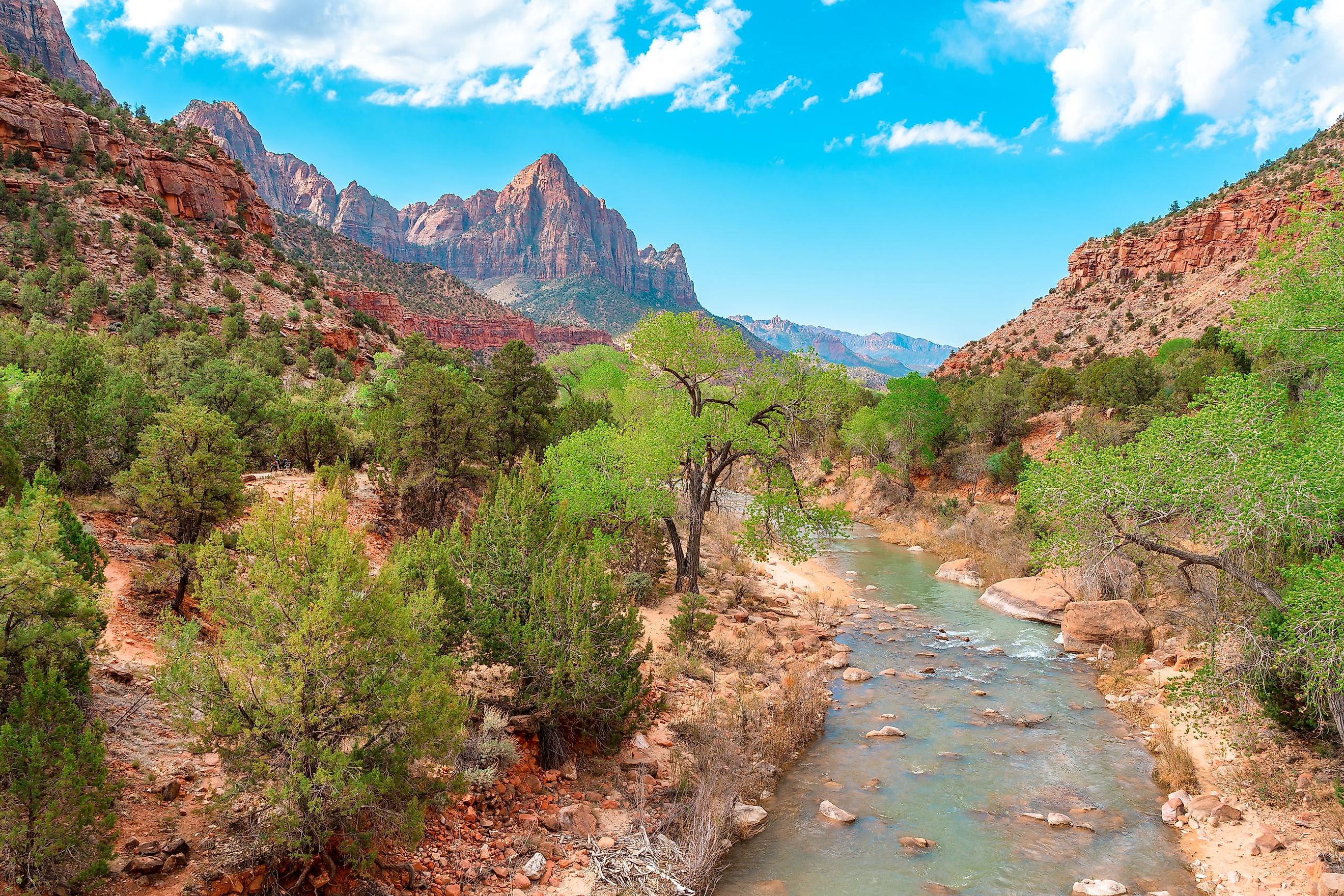
Virgin River
The Virgin River is a 261km long river that serves as one of the tributaries of the mighty Colorado River. The Virgin River’s watershed covers parts of Utah, Nevada, and Arizona in the western United States, draining an area of approximately 31,700 sq. km. During the centennial celebrations of the Zion National Park in 2009, the Virgin River was designated as the first scenic and wild river in the US State of Utah.
Course Of The Virgin River

The North Fork Virgin River begins from the Navajo Lake and cuts through the deep red-colored Navajo sandstone of the magnificent Zion Canyon in the western part of the Zion National Park. The East Fork Virgin River flows through the unincorporated community of Mount Carmel Junction, on the eastern side of the Parunaweap Canyon and the Zion National Park. The Virgin River is formed by the confluence of the East Fork Virgin River with the North Fork Virgin River in the southwestern part of Utah, at the Navajo Reservoir in the Dixie National Forest, situated to the north of the Zion National Park. The Virgin River then flows in the southwestern direction through the city of St. George, located on the boundary between Utah and Arizona. The river then flows across the northwestern part of Arizona, passing through the towns of Littlefield and Beaver Dam and the scenic Virgin River Gorge.
From here, the Virgin River enters the southern part of Nevada close to the city of Mesquite. Finally, it drains into the Colorado River at the Lake Mead Reservoir that has been created by the massive Hoover Dam. The last 48km of the Virgin River forms the long Overton/Virgin Arm of Lake Mead. Throughout its course, the Virgin River drops from an elevation of approximately 1,147m above sea level at its source to about 367m at its confluence with the Colorado River. The Virgin River discharges an average of 5.2 cubic meters of water per second. Some of the major tributaries of the Virgin River include Muddy River, Moapa River, Fort Pearce Wash, Santa Clara River, Toquop Wash, La Verkin Creek, Ash Creek, and Beaver Dam Wash.
Ecology Of The Virgin River

The Virgin River flows through the southwestern part of Utah, situated at the meeting point of three physiographic regions: Colorado Plateau, Great Basin Desert, and the Mojave Desert. The Virgin River System supports the unique floral, and faunal communities found only in this region's beautiful landscapes and habitats and nowhere else on the planet. Some of the notable wildlife species in this region include Virgin River chub, Virgin spinedace, Flannelmouth sucker, Desert sucker, Speckled dace, woundfin, and Southwestern Willow Flycatcher.
Brief History Of The Virgin River

According to several historical sources, it is believed that the river was originally named “Rio de la Virgen” in Spanish, literally meaning “River of the Virgin” and dedicated to the Virgin Mary. However, it has not been recorded by whom or when the river was named. Antonio Armijo and his Spanish successors developed the historic Old Spanish Trail that followed a portion of the Virgin River and connected the settlements of New Mexico with Southern California and the city of Los Angeles. The American explorer John Charles Fremont also believed that the river was called “Rio Virgen,” but he did not state when and by whom the river was named. In 1826, the American explorer Jedediah Strong Smith explored the southwestern part of the Great Salt Lake and reached the lower Rio Virgen and Colorado River. Smith was the first known Euro-American to come across the Rio Virgen River that he named “Adams River” in honor of the then US President John Quincy Adams. Some sources believe that Smith later renamed the “Adams River” as “Virgin River” in honor of Thomas Virgin, the American fur trader killed by the Mohaves while crossing the Mohave Desert.











